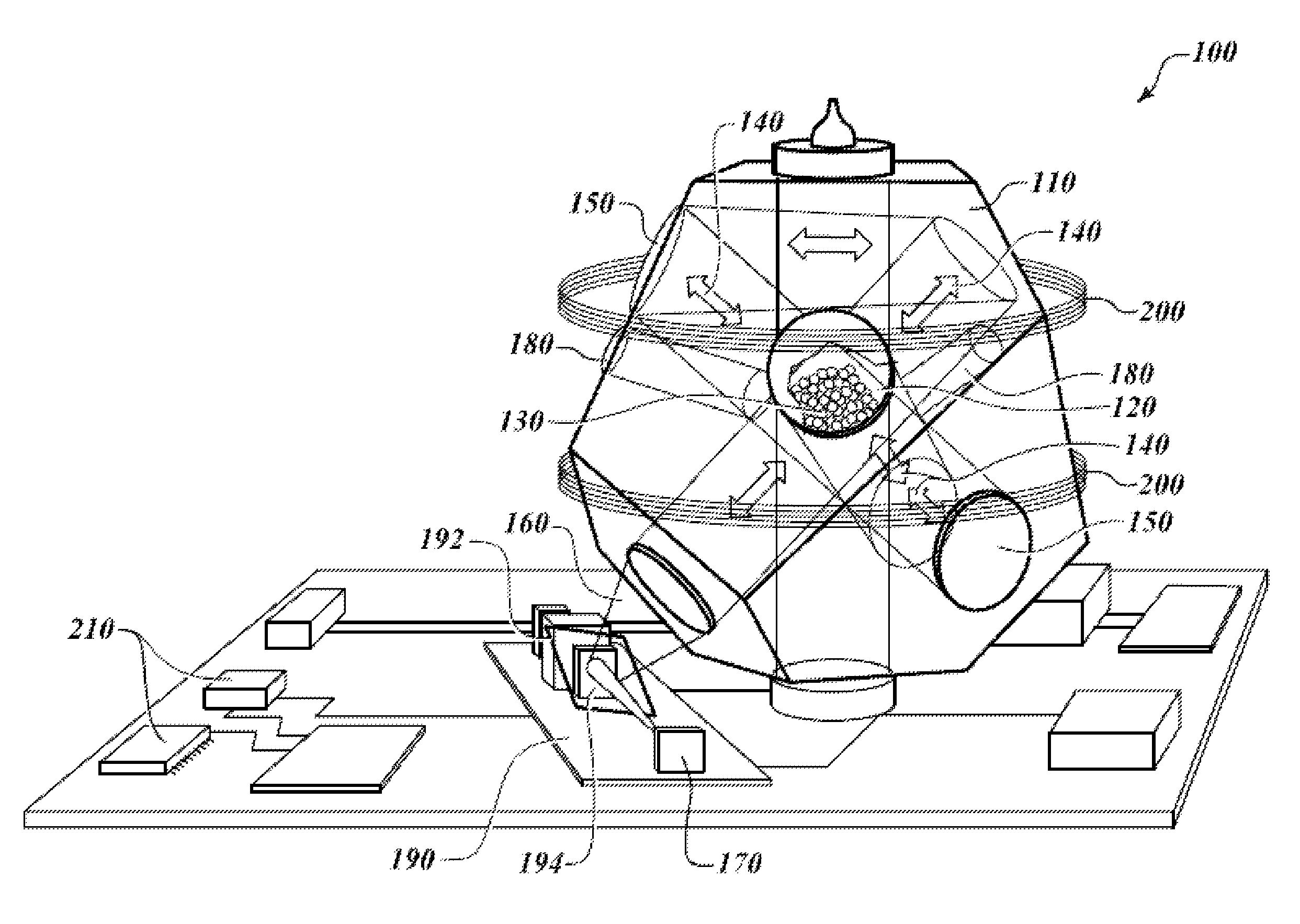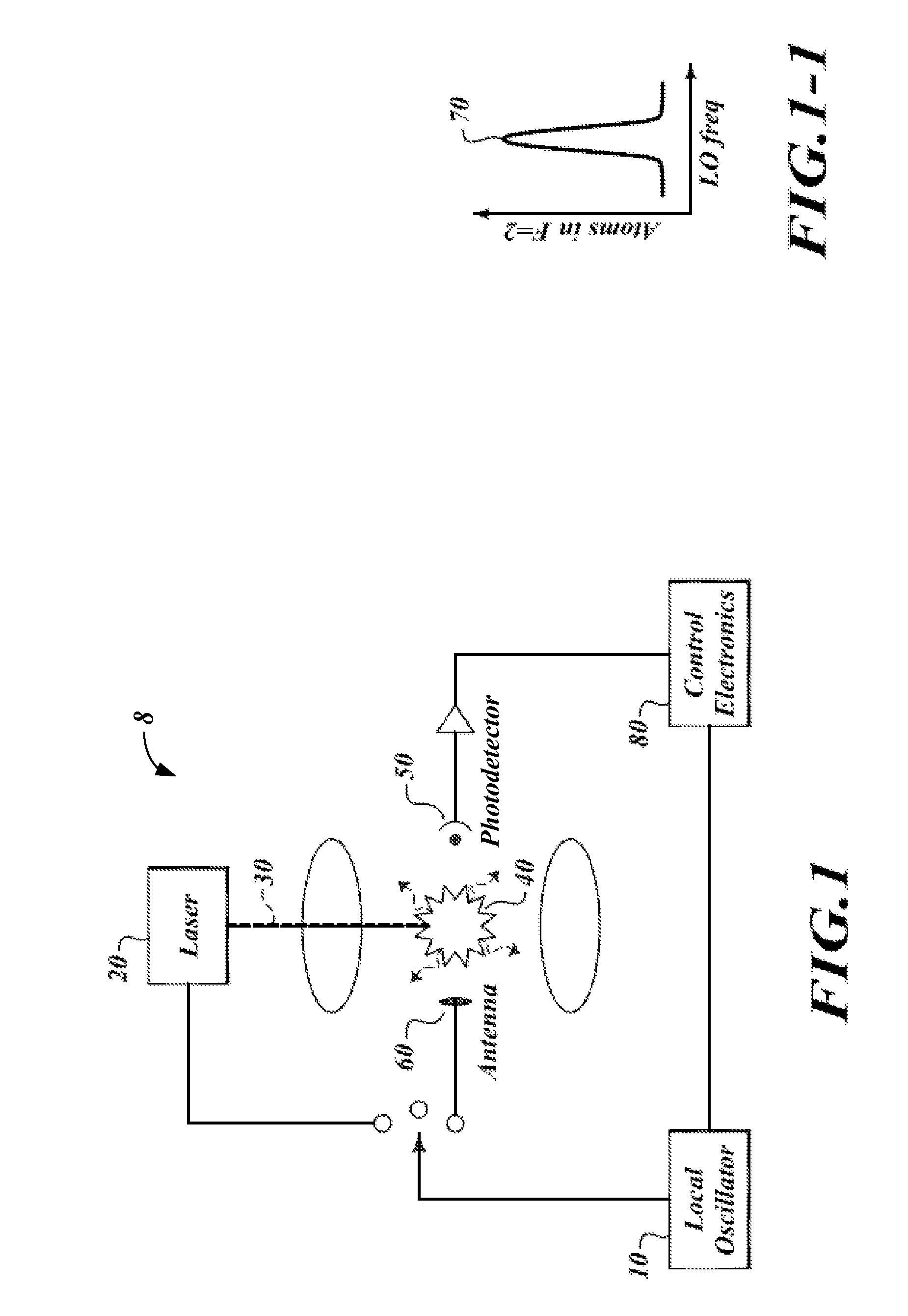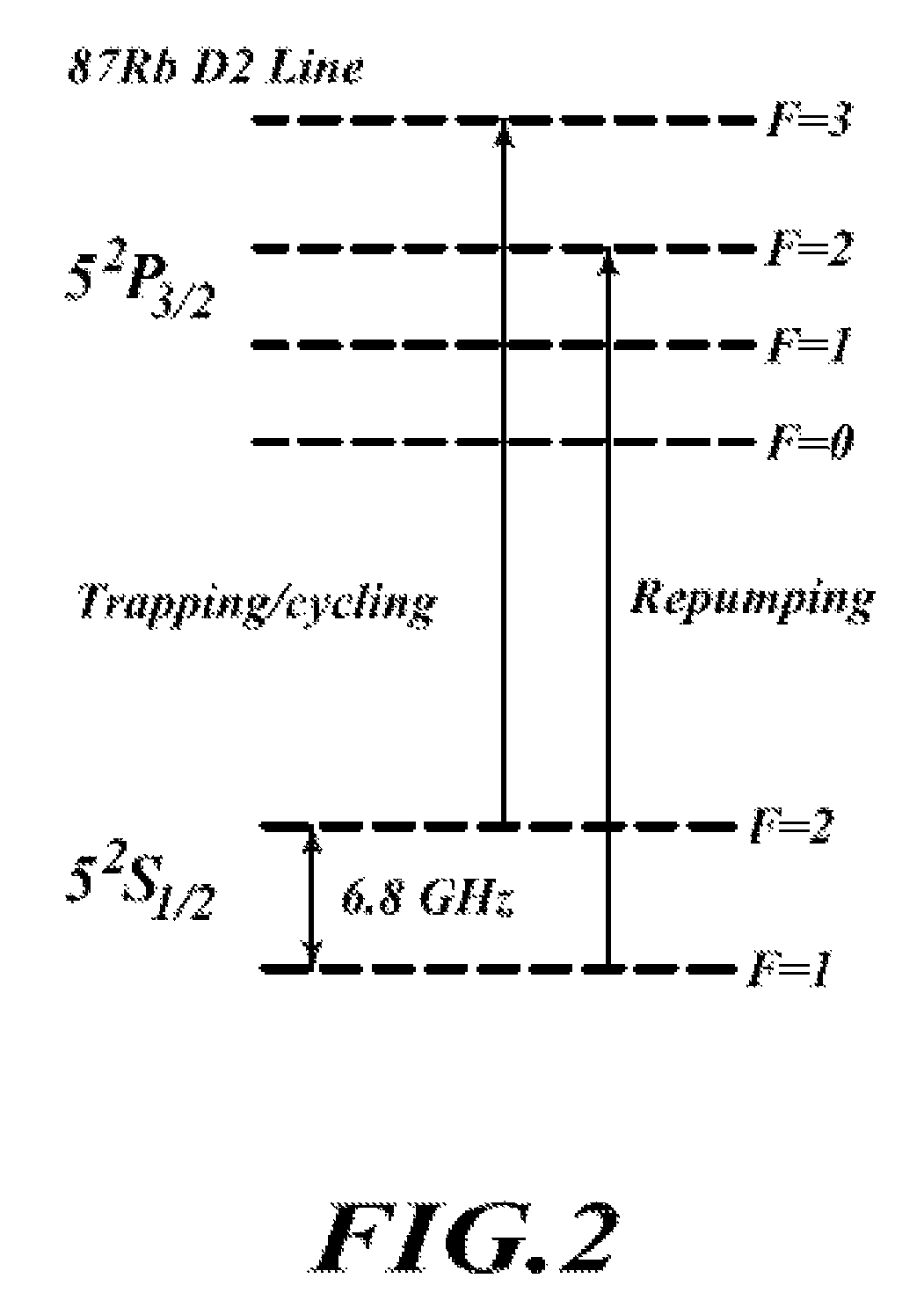Cold atom micro primary standard
a micro-organism and primary standard technology, applied in the field of atomic clocks, can solve the problems of large primary frequency standards, large power consumption, and difficult to achieve further reductions, and achieve the effects of large frequency-shift errors, long life, and maximum number of alkali metal atoms
- Summary
- Abstract
- Description
- Claims
- Application Information
AI Technical Summary
Benefits of technology
Problems solved by technology
Method used
Image
Examples
Embodiment Construction
[0024]The principles underlying an embodiment of an atomic clock will now be described. In doing so, reference will be made to FIG. 1, a block diagram of one embodiment of an atomic clock 8, and FIG. 2, which is an energy level and frequency diagram for the alkali metal Rb-87.
[0025]The embodiment described here in connection with FIGS. 1 and 2 is based on the 6.834682 GHz frequency splitting between the F=1 and F=2 ground hyperfine states in Rb-87 (FIG. 2). A local oscillator (“LO”) 10, such as a micro-electro mechanical system (“MEMS”) resonator or an electronic Colpitts oscillator, is stabilized to be resonant with the 6.8 GHz atomic transition. As shown in FIG. 1, a laser 20 generates a laser beam 30 that is used to cool Rb-87 atoms 40. Because the Rb-87 atoms 40 are laser cooled (as described in more detail below), the cold atoms move slowly so that there can be long observations times yielding very narrow clock linewidths without requiring a large physics package. Near-resonant...
PUM
 Login to View More
Login to View More Abstract
Description
Claims
Application Information
 Login to View More
Login to View More - R&D
- Intellectual Property
- Life Sciences
- Materials
- Tech Scout
- Unparalleled Data Quality
- Higher Quality Content
- 60% Fewer Hallucinations
Browse by: Latest US Patents, China's latest patents, Technical Efficacy Thesaurus, Application Domain, Technology Topic, Popular Technical Reports.
© 2025 PatSnap. All rights reserved.Legal|Privacy policy|Modern Slavery Act Transparency Statement|Sitemap|About US| Contact US: help@patsnap.com



